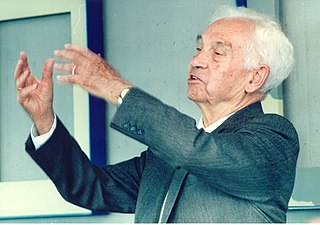
Ernst Walter Mayr was one of the 20th century's leading evolutionary biologists. He was also a renowned taxonomist, tropical explorer, ornithologist, philosopher of biology, and historian of science. His work contributed to the conceptual revolution that led to the modern evolutionary synthesis of Mendelian genetics, systematics, and Darwinian evolution, and to the development of the biological species concept.

The peregrine falcon, also known as the peregrine, and historically as the duck hawk in North America, is a cosmopolitan bird of prey (raptor) in the family Falconidae. A large, crow-sized falcon, it has a blue-grey back, barred white underparts, and a black head. The peregrine is renowned for its speed, reaching up to 320 km/h (200 mph) during its characteristic hunting stoop, making it the fastest member of the animal kingdom. According to a National Geographic TV program, the highest measured speed of a peregrine falcon is 389 km/h (242 mph). As is typical for bird-eating raptors, peregrine falcons are sexually dimorphic, with females being considerably larger than males.

Falconry is the hunting of wild animals in their natural state and habitat by means of a trained bird of prey. Small animals are hunted; squirrels and rabbits often fall prey to these birds. Two traditional terms are used to describe a person involved in falconry: a "falconer" flies a falcon; an "austringer" flies a hawk or an eagle. In modern falconry, the red-tailed hawk, Harris's hawk, and the peregrine falcon are some of the more commonly used birds of prey. The practice of hunting with a conditioned falconry bird is also called "hawking" or "gamehawking", although the words hawking and hawker have become used so much to refer to petty traveling traders, that the terms "falconer" and "falconry" now apply to most use of trained birds of prey to catch game. Many contemporary practitioners still use these words in their original meaning, however.

Birdwatching, or birding, is the observing of birds, either as a recreational activity or as a form of citizen science. A birdwatcher may observe by using their naked eye, by using a visual enhancement device like binoculars or a telescope, by listening for bird sounds, or by watching public webcams.

Aldo Leopold was an American author, philosopher, naturalist, scientist, ecologist, forester, conservationist, and environmentalist. He was a professor at the University of Wisconsin and is best known for his book A Sand County Almanac (1949), which has been translated into fourteen languages and has sold more than two million copies.
Stanley A. "Stan" Temple is an American avian ecologist and wildlife biologist. He is the Beers-Bascom Professor in Conservation, Professor of Wildlife Ecology and Professor of Environmental Studies at the University of Wisconsin–Madison. At Cornell University he graduated in 1968 with a B.S. in biological sciences, in 1970 with an M.S. in ecology, and in 1972 with a Ph.D. in ecology and evolutionary biology. Professor Temple has made important contributions to the study of peregrine falcons, whooping cranes, trumpeter swans, Andean condors, hook-billed kites, Mauritius kestrels, Seychelles kestrels, Puerto Rican amazons, Mauritius parakeets, tooth-billed pigeons, Hawaiian crows, loggerhead shrikes, and dickcissels. He has also worked on the responses of wildlife to habitat fragmentation, human impacts on wildlife populations and the ecology of avian predators. He is the author of many books and scholarly articles including Wisconsin Birds: A Seasonal and Geographical Guide (ISBN 0-299-15224-3), Endangered Birds (ISBN 0-85664-831-0), Bird Conservation (ISBN 0-299-08980-0) and Endangered birds: Management techniques for preserving threatened species (ISBN 0-299-07520-6).
Frances Hamerstrom was an American writer, naturalist and ornithologist known for her work with the greater prairie chicken in Wisconsin, and for her research on birds of prey. Hamerstrom was a prolific writer, publishing over 100 professional papers and 10 books on the prairie chicken, harriers, eagles, and other wildlife topics. Some were translated into German.

Wyalusing State Park is a 2,628-acre (1,064 ha) Wisconsin state park at the confluence of the Mississippi and Wisconsin rivers in the town of Wyalusing, just south of Prairie du Chien.

Bird collections are curated repositories of scientific specimens consisting of birds and their parts. They are a research resource for ornithology, the science of birds, and for other scientific disciplines in which information about birds is useful. These collections are archives of avian diversity and serve the diverse needs of scientific researchers, artists, and educators. Collections may include a variety of preparation types emphasizing preservation of feathers, skeletons, soft tissues, or (increasingly) some combination thereof. Modern collections range in size from small teaching collections, such as one might find at a nature reserve visitor center or small college, to large research collections of the world's major natural history museums, the largest of which contain hundreds of thousands of specimens. Bird collections function much like libraries, with specimens arranged in drawers and cabinets in taxonomic order, curated by scientists who oversee the maintenance, use, and growth of collections and make them available for study through visits or loans.
The Peregrine Fund is a non-profit organization founded in 1970 that conserves threatened and endangered birds of prey worldwide. The successful recovery of the peregrine falcon in the United States, which was removed from the U.S. Endangered Species List in 1999, enabled the organization to expand its mission to include other endangered raptors around the world. The Peregrine Fund is headquartered at its World Center for Birds of Prey in Boise, Idaho, on a 580-acre (2.3 km2) campus with breeding and research facilities, an administrative office, interpretive center, research library, and archives.
Aldo Carl Leopold was an American academic and plant physiologist, son of Aldo Leopold, a noted ecologist. He is known for his research on soybeans which led to techniques allowing insulin to be dried and later processed into an inhalable insulin.

Szabolcs Kókay is an illustrator, wildlife artist and nature painter.
Estella Bergere Leopold is an American paleobotanist and a conservationist. As a researcher in the United States Geological Survey, she aided in uncovering records of plant life from the Miocene around the Eniwetok and Bikini Atolls in the southern Pacific Ocean and from the Cenozoic era in the Rocky Mountains. As a professor of botany and forest sciences at the University of Washington, she directed the Quaternary Research Center, researched the forest history of the Pacific Northwest, and collaborated with Chinese paleobotanists. Leopold's work as a conservationist includes taking legal action to help save the Florissant Fossil Beds in Colorado, and fighting pollution. She is the daughter and only surviving child of Aldo Leopold.
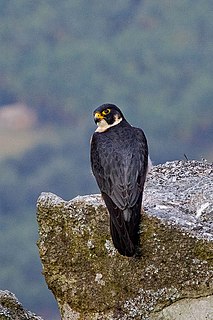
The shaheen falcon is a non-migratory subspecies of the peregrine falcon found mainly in the Indian subcontinent. It has also been described as a migratory subspecies. Other common names for the subspecies include the black shaheen and Indian peregrine falcon. The word shaheen in these names may also be spelled as shahin. This species was termed as the black shaheen by falconers to separate it from the true shaheen of Persian literature. Scholars of Persian and the Russian ornithologist Georgi Petrovich Dementiev have noted that the name shaheen in Persian literature actually referred to Falco peregrinus babylonicus.
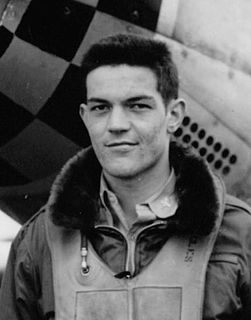
Harrison Bruce "Bud" Tordoff was an American ornithologist and conservationist. He was brought up in Mechanicville in upstate New York, hunting and fishing, and became interested in wildlife management and zoology. He studied as an undergraduate at Cornell University, returning to complete his degree after a period of military service during World War II. He had served as a fighter pilot in the United States Army Air Forces, and his five confirmed aerial victories qualified him as a fighter ace.

Alden Holmes Miller was an American ornithologist and director of the Museum of Vertebrate Zoology at the University of California, Berkeley for 25 years. He published over 250 papers on the biology, distribution, and taxonomy of birds, and served as president of the American Ornithologists' Union (1953-1955) and the International Commission on Zoological Nomenclature (1964-1965), and as editor of The Condor from 1939 until his death. He was a member of the National Academy of Sciences.
Thomas Joseph Cade was an American ornithologist most notable for his efforts to conserve the peregrine falcon.
William Hanna Elder was a zoology professor, who worked in "wildlife management, range and wildlife habitat management, ornithology, and mammalogy". He was a Guggenheim Fellow for the academic year 1956–1957.
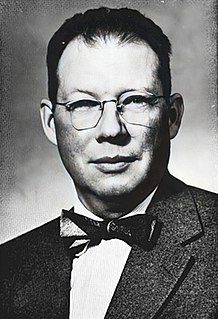
Paul Lester Errington was an American conservationist and professor. His work included field studies in wetlands, wildlife populations and keeping habitats intact. In the early 1930s, Errington realized that hunting restrictions did not stop North American wildlife from declining. He focused on how large changes made animals lose their habitats. Errington received multiple honors for his work.
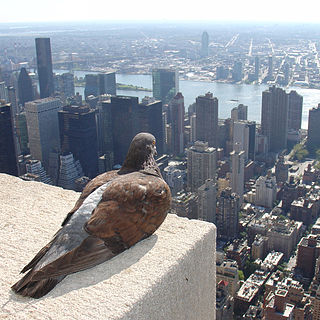
New York City is home to a large birding community and diverse range of bird species. Though it is the most populous and most densely populated city in the United States, NYC is home to a range of ecological habitats and is situated along the Atlantic Flyway, a major route for migrating birds. More than 400 species have been recorded in the city, and their concentration in the city's urban parklands, forests, marshes, and beaches has made birding a popular activity in the city, especially after the start of the COVID-19 pandemic.












